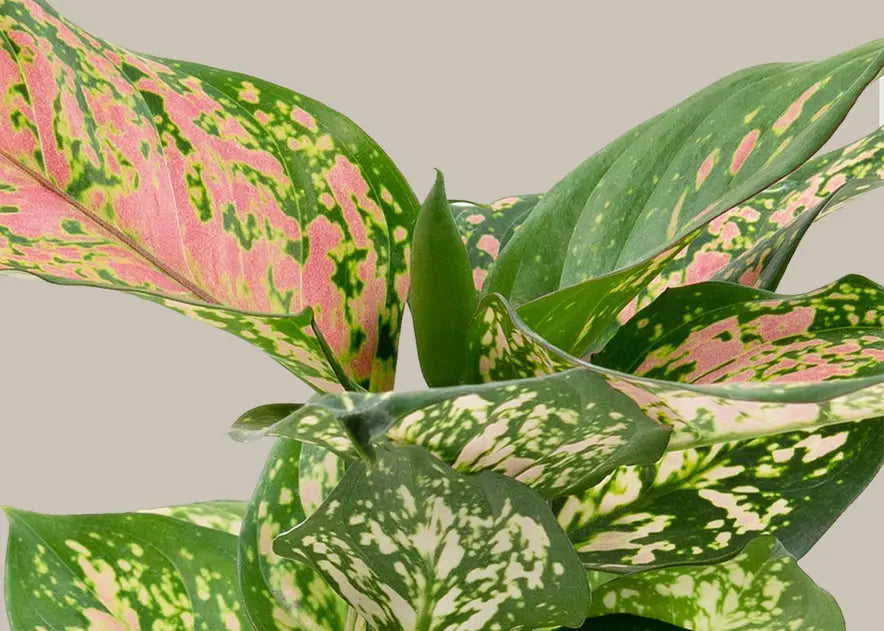
Plants 101
How to Care for an Aglaonema
Aglaonema plants are an excellent choice for indoor gardening, thanks to its easy-care nature and striking foliage. Find out our tips for keeping it happy and healthy!

The Aglaonema plant, also known as the Chinese Evergreen, is a popular indoor plant with origins in the tropical and subtropical regions of Asia. It's a member of the Araceae family and is known for its striking foliage, which varies in shape, size, and color. The plant is also known as the "luck plant" due to its association with good fortune in Chinese culture.

There are several types of Aglaonema plants, each with its unique characteristics. Some of the most common types include the Silver Bay, Red Emerald, and Maria. The Silver Bay has silver-green leaves with dark green markings, while the Red Emerald has green leaves with red edges. The Maria, on the other hand, has dark green leaves with silver markings.
Sunlight
The Aglaonema plant thrives best in medium-bright, indirect light. It can also tolerate low light conditions, but it may affect the plant's growth and cause it to grow more slowly. It's best to place the plant directly in or near a window, preferably an East or West exposure but unobstructed Northern windows can work which provide low-moderate indirect light. Avoid placing the plant in direct, afternoon sunlight from a South window as it can scorch the leaves unless a sheer curtain is drawn. If you're thinking of placing the plant farther from a light source consider measuring light to ensure your Aglaonema receives enough!
Water
The Aglaonema plant prefers evenly moist soil but can tolerate periods of drought. Water the plant once the soil has dried out. Expect to water more often in brighter light and less often in lower light. Overwatering can cause root rot, so make sure the pot has proper drainage and check the moisture of the soil prior to watering. Using a moisture meter is great for helping you know when to water.
Humidity
The Aglaonema plant can tolerate normal room humidity but can benefit from higher humidity levels. You can increase humidity by incorporating a humidifer if the air in the home is consistenly dry. Avoid placing the plant near heaters or air conditioning vents as it can dry out the leaves and cause leaf drop. Not sure if humidity is high enough? You can measure the level of humidity with a hygrometer or LTH meter.
Temperature
The Aglaonema plant prefers temperatures between 65°F to 80°F (18°C to 27°C). It can tolerate lower temperatures but may suffer damage if exposed to temperatures below 50°F (10°C). Keep the plant away from cold drafts and air conditioning vents.
Soil
The Aglaonema plant prefers well-draining soil with good moisture retention. A mix of coco coir, perlite, and compost can provide the ideal growing conditions. It's also best to use a pot with drainage holes to prevent waterlogging the soil. Alternatively, providing a layer of lava rocks to the bottom of pots with no drainage holes can help create a place for excess water to pool away from your plant's roots.
Common Problems
This is generally an easy going plant.
SYMPTOM: Yellowing Leaves, wet potting mix
CAUSE: Overwatered
SYMPTOM: Wilting leaves, dry potting mix
CAUSE: Thirsty, underwatered
Precautions
The Aglaonema plant can be toxic to pets and children if ingested. Keep the plant out of reach and contact a veterinarian or medical professional if accidental ingestion occurs.

Words By The Sill
Empowering all people to be plant people—a collection of articles from The Sill's team of plant experts across a variety of plant care topics to inspire confidence in the next generation of plant parents. Welcome to Plant Parenthood™.
Do Some Plant Shopping